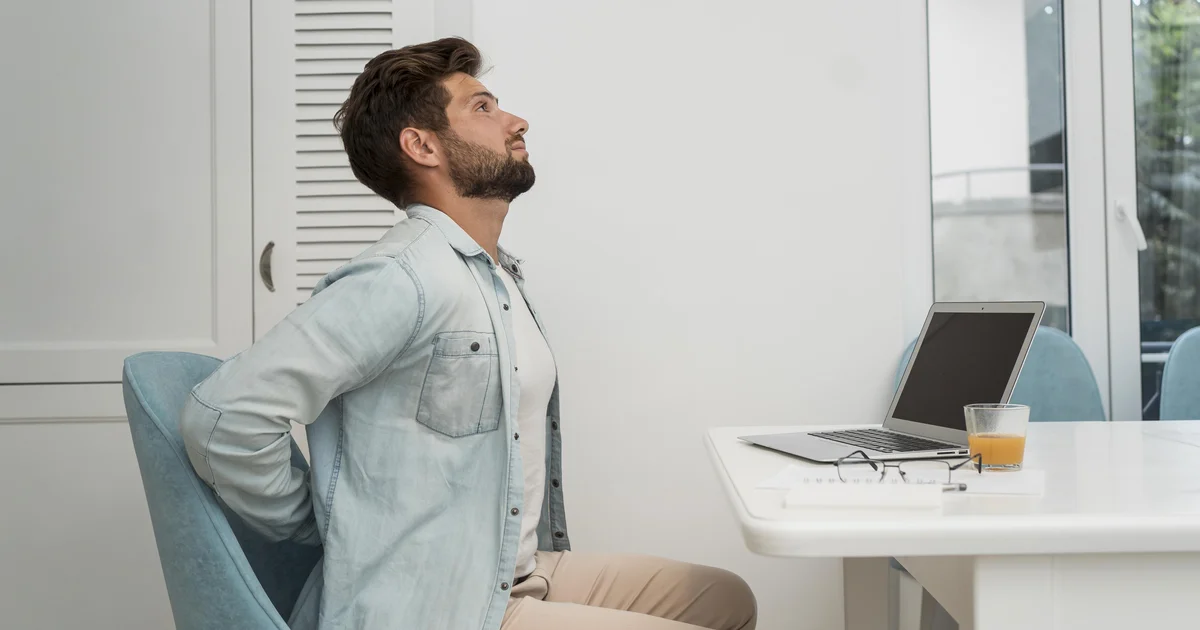Looking for a way to relieve everyday back pain? Here is the easy best lower back stretches you can do at home.
Lower back stretches for pain relief are one of the most common complaints in the United States. It can be debilitating and render you unable to do everyday activities. There are some simple stretches that you can do to relieve your lower back pain on a daily basis. (1, 2, 3, 4)
The best lower back stretches
The leading cause is thought to be alterations in the lower back’s structure brought on by musculoskeletal injury. The causes of lower back discomfort might differ, though.
Your musculoskeletal system, which gives shape, support, and stability, comprises muscles, bones, tendons, ligaments, and other connective tissues. They make it possible to move.
The hamstrings, which are found at the back of your thighs, and the hip flexors are two other muscles crucial in preserving your spinal column’s natural curvature. Lower back pain may be a result of these muscles being tight.
The majority of the time, minor lower back discomfort resolves on its own within a few days or weeks. When lower back discomfort lasts longer than three months, it is deemed chronic.
This article offers eight lower back stretches that may be performed with little to no equipment in the convenience of your home.
Stretches to relieve lower back pain
1. Child’s Pose (lower back stretches)
This popular yoga position gently lowers the back and stretches muscles, which are probably tightened if you’re in pain. Hashish also claims to assist expand your hips in addition to relaxing the lower back. Litzy advises spreading your knees apart as far as you can without hurting yourself if you discover that your hips are giving you trouble.
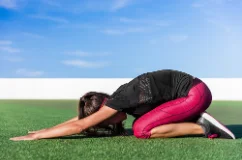
- Start off on your hands and knees in a tabletop position, with your hands immediately beneath your shoulders and your knees directly beneath your hips.
- Put your hands flat on the ground in front of you while you extend your arms. Gently lean back from your heels to your hips, lowering your head and chest as your arms stretch farther out in front of you towards the wall.
- If this stretch is too much for you, elevate yourself up a little bit with a pillow under your tummy to minimize the strain on your low back muscles.
- Maintain this position for at least 20 and maybe 30 seconds.
2. The “Cat/Cow “ (lower back stretches)
In order to extend tight muscles and ease discomfort, this dynamic technique engages the low-back muscles in two directions and builds on the Child’s Pose. According to hashish, it can also aid in improving general balance and core strength. Make sure to concentrate on your pelvis, says Litzy, and pretend that you have a tail that you want to tuck under you or stick towards the ceiling.
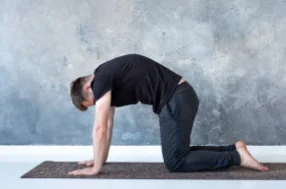
- Start off on your hands and knees in a tabletop position, with your hands immediately beneath your shoulders and your knees directly beneath your hips.
- In this position, your spine should be perpendicular to the floor. Then, arch your back, stretching the area between your shoulder blades, much like a cat would do while stretching.
- Hold for another five seconds, then release your hold and allow your tummy to drop while you softly arch your low back.
- For at least 30 seconds, keep doing these motions.
3. Supine Twist (lower back stretches)
This stretch aids in stretching not only your lower back but also your glutes, which can constrict when you have low back discomfort and eventually aggravate the pain. According to hashish, it also has a positive impact on general spine flexibility.
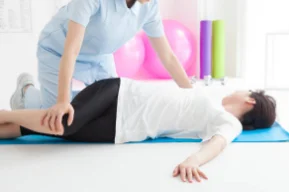
- Lay on your back, legs bent, and feet flat on the ground to start. Put your arms out to the sides in the shape of a “T.”
- Roll both knees to one side softly while keeping your shoulders on the ground.
- Keep your knees in the center for 20 to 30 seconds, then switch sides and repeat.
- Place a pillow or stack of blankets between your knees while you twist to each side of the stretch is too much for you.
4. Knee-to-Chest (lower back stretches)
This stance lengthens and stretches tight low back muscles, just like the other stretches on this list, according to Hashish. If the child’s stance puts too much emphasis on the hands and hips, Litzy continues, this is a perfect substitute.
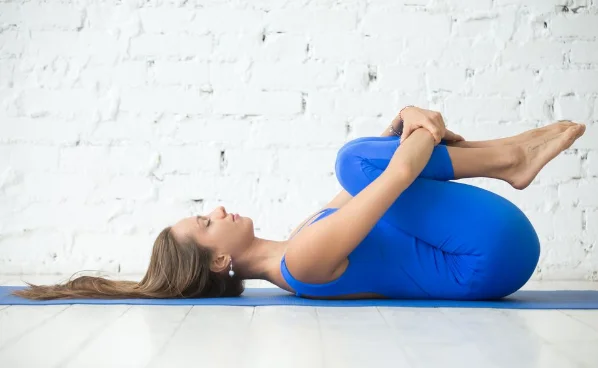
- Lay on your back, legs bent, and feet flat on the ground to start. Either place your hands behind your knees or just behind the kneecaps.
- Using your hands to gently pull your knees, slowly raise both knees to your chest.
- Return to the starting position after holding for 20 to 30 seconds while swaying your hips up and down to assist massage your low back.
5. The Pelvic Tilt (lower back stretches)
Lower back stretches might make you feel as though your entire pelvic region is immobile. By easing sciatica and bolstering abdominal muscles, this stretch will help you gradually regain some movement in this area, claims hashish.
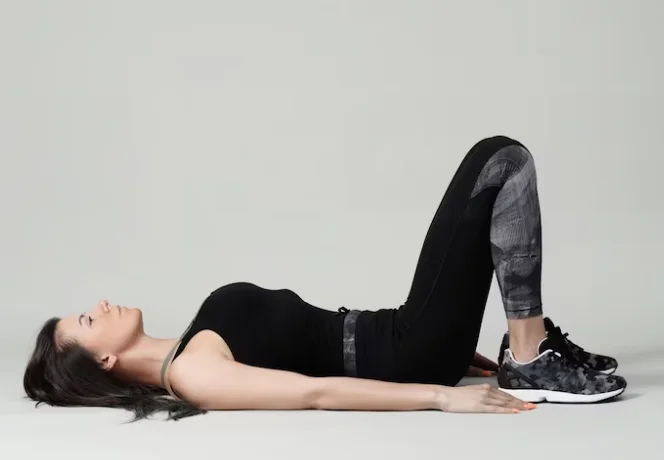
- Lay down on a yoga mat with your feet flat on the ground and your knees bent.
- Strive to unwind your low back and maintain a neutral spine (which means you should feel a slight curve in your low back if you place the top of your hand under your back).
- Engage your core muscles, then tilt your pelvis slightly upward to flatten your low back against the floor. 12 to 15 times, repeat.
6. Supine Figure 4 Stretch (lower back stretches)
This traditional yoga position is beneficial for both massaging your low back and opening up the hips. According to Hillary Wright, adjunct professor of biology, anatomy, and physiology at Manhattan College, “this pose extends your piriformis and your outer glutes, all of which can contribute to a tight lower back.” According to Hashish, it is a useful stretch for reducing pain and enhancing hip mobility.
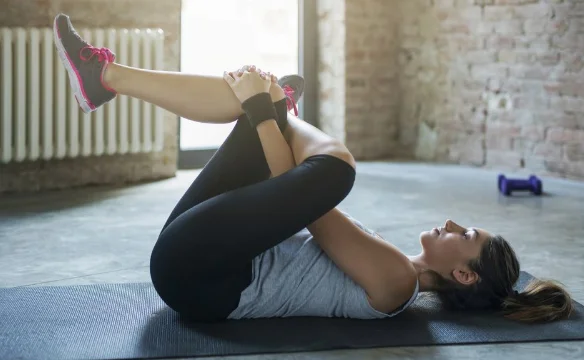
- On a yoga mat, lie on your back with your knees bent and your feet flat on the ground.
- Flex your right foot and cross your right ankle across your left thigh while lifting your right leg.
- Stay here if this is sufficient, or draw your left knee in and hold onto your left thigh to intensify the exercise.
- Hold for ten to fifteen breaths before switching to the opposite side.
7. Supported bridge (lower back stretches)
For the supported bridge, you’ll use a hard cushion or foam roller. By elevating your lower back, this exercise relieves compression.
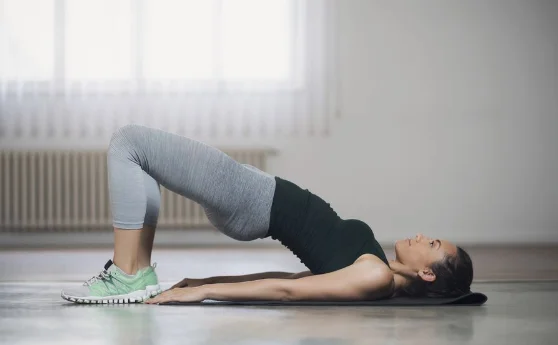
- Knees bent and feet flat on the floor, lie on your back.
- Place a hard cushion or foam roller underneath your raised hips.
- Relax your body completely into the cushion or foam roller’s support as well as the floor.
- Rest for 30-60 seconds in between sets while holding the position for 30-60 seconds each time.
8. Trunk rotation (lower back stretches)
Your lower back may feel less tense by rotating your trunk. Also, it exercises the muscles in your core, such as your back, pelvic floor, and abdominals.
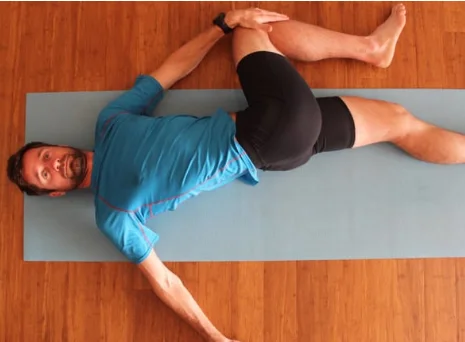
- Your body should be in a chair-like position as you lay on your back with your knees up towards your chest.
- Your palms should be on the ground with your arms fully extended out to the sides.
- Gently roll both bent legs to your right side while maintaining a straight spine and hands on the floor. Hold for 15 to 20 seconds.
- Once more holding for 15 to 20 seconds, go back to the beginning position and perform step 3 on your left side.
Repeat on each side 5–10 times.
Summary
Lower back pain is the most common type of pain and can be a result of numerous factors.
This type of pain can be eased with simple stretches that you can do every day.
Stretching not only relieves chronic lower back pain but can also help prevent it from developing in the first place.
Frequently asked questions
How do you stretch your lower back?
What is the best stretch for lower back pain?
-Nonprescription painkillers. Using over-the-counter painkillers frequently helps you feel better while you heal from a small injury or strain.
-Hot and cold therapy.
-Use light exercises for Lower back stretches
Should you stretch a tight lower back?
Is it better to sit or lay down with lower back pain?
References
1.Steffens, D., Maher, C. G., Pereira, L. S., Stevens, M. L., Oliveira, V. C., & Chapple, M. (2015). Prevention of low back pain: a systematic review and meta-analysis. JAMA Intern Med. 2016; 176: 199–208.
2. Sitthipornvorakul, E., Klinsophon, T., Sihawong, R., & Janwantanakul, P. (2018). The effects of walking intervention in patients with chronic low back pain: A meta-analysis of randomized controlled trials. Musculoskeletal Science and Practice, 34, 38-46.
3. Vanti, C., Andreatta, S., Borghi, S., Guccione, A. A., Pillastrini, P., & Bertozzi, L. (2019). The effectiveness of walking versus exercise on pain and function in chronic low back pain: a systematic review and meta-analysis of randomized trials. Disability and Rehabilitation, 41(6), 622-632.


